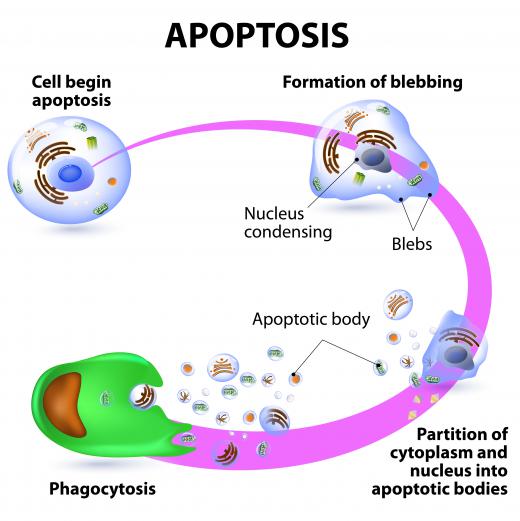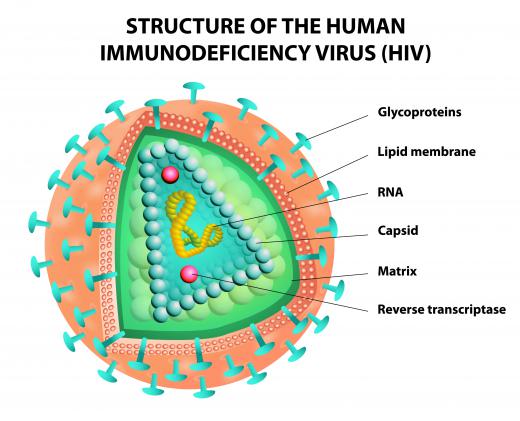What is Programmed Cell Death?
Programmed cell death is the process by which cells in plants and animals die through self-destruction, rather than due to injury. Also referred to in animal cells as apoptosis, the process is typically a part of embryonic development of all animals and is thought to be responsible for the development of individual digits and the elimination of excess materials in various stages of animal development. It is also an element of the immune system in animals, and the process by which excess or flawed cells in the body are eliminated to maintain homeostasis and health. Programmed cell death can also have a negative effect on the body of an animal or human being when triggered by viruses.
Studied and documented throughout the latter half of the 20th century, programmed cell death is responsible for how various animals and plants develop and grow. Plants and animals typically grow through the division and replication of cells in the organism. In order to properly offset this process, however, programmed cell death occurs to keep the body of the plant or animal from growing at too tremendous a rate.

The process is fairly complicated, but basically a cell is given a signal either from within or from outside the cell to begin breaking down. Those pieces are then subsequently marked to be “eaten” by phagocytes in the organism. This prevents any harmful materials or coding within the cell from affecting the rest of the cells of the organism.
Programmed cell death is thought to be an especially important part of animal growth and development in early life and the embryonic stage. For example, evidence indicates that the early development of individual fingers and toes in a human fetus is due to the apoptosis of the cells that would exist between the digits but die off, leaving the remaining cells to form the individual fingers. Similarly, the reincorporation of a tadpole’s tail into its body as it becomes a frog is due to cell death, rather than the continued division and growth of those tail cells.

Unfortunately, programmed cell death can be hindered by certain viruses and other adverse physiological conditions. The spread of cancer throughout an animal’s body is typically due to apoptosis not properly occurring in the organism’s body. In ideal conditions, cancerous cells should be ordered to die by proteins in the body, preventing those cancerous cells from dividing and spreading.
The programmed cell death does not properly occur, however, in many cases of cancer, leading to the spread of potentially deadly cells throughout the body. The human immunodeficiency virus (HIV) similarly uses programmed cell death in a negative way by causing T helper cells that typically fight off viruses and other infections in the human body to begin self-destructing. This condition, referred to as acquired immunodeficiency syndrome (AIDS), effectively destroys the body’s immune system, which often leads to complications or death from other illnesses.
AS FEATURED ON:
AS FEATURED ON:












Discuss this Article
Post your comments